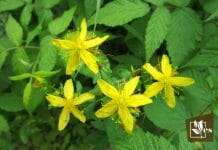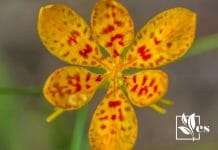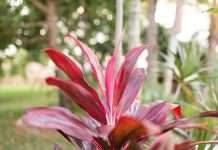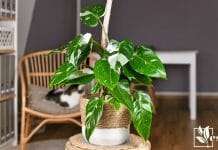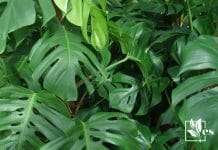Growing plants similar to hostas that like sun is sometimes the only choice if you have a sunny garden – an infamous adversary of the shade-loving perennial. Here, you will learn about a few attractive alternatives to growing hostas in the scorching sun outside a shade garden.
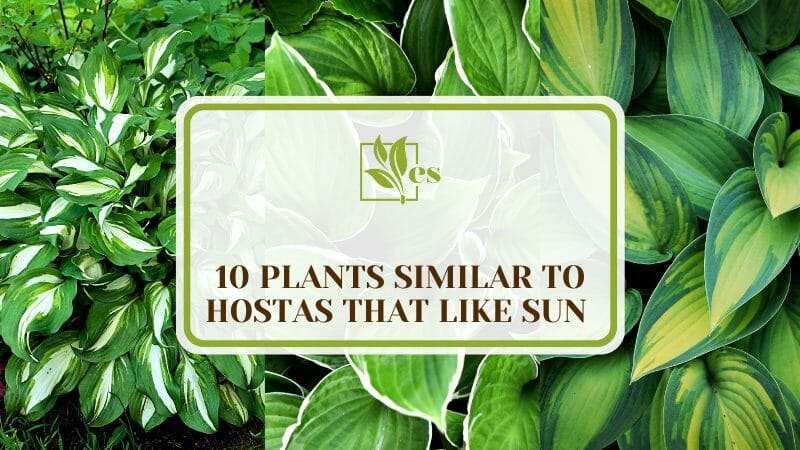
It is noteworthy that a few hosta varieties are both shade and sun-tolerant (August Moon, Gold Standard) – these hostas grow well when exposed to 5-6 hours of sun, but no more.
Regardless, reading this article will help you settle on an excellent substitute for a hosta plant that adds to the overall look of your garden.
JUMP TO TOPIC
Types of Plants Similar to Hostas That Like Sun
Let us look at some plants that look similar to hostas, can grow outside shade gardens, and perform well as a ground cover and landscaping tool.
Note there are also other varieties and cultivars of the listed plants in the same family – you can look into them to find one that best complements your garden.
1. Pigsqueak
Formally known as Bergenia Cordifolia, the Pigsqueak (named after the sound produced when you rub its leaves between your fingers) is a hardy, clump-forming, evergreen perennial best grown in full sun. It can even tolerate full shade! As with most perennials, the more sun you give, the more you have to water it.
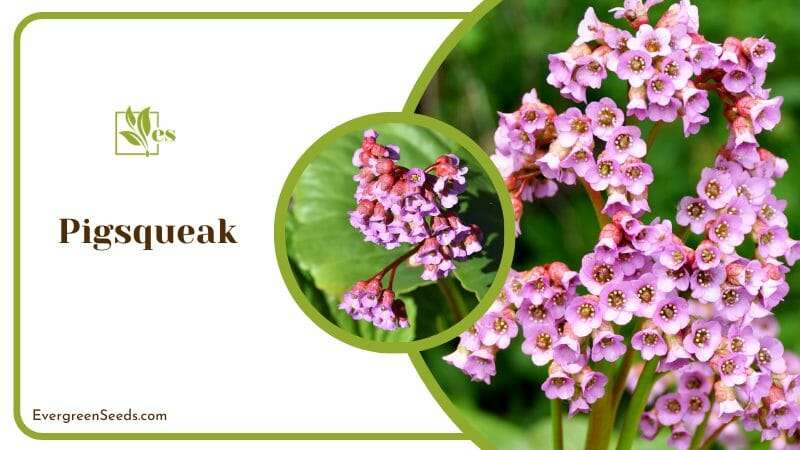
Pigsqueak has a spread of around 24–26 inches and can grow up to 12–18 inches tall. It is known for its adaptability and easy maintenance, which, combined with its large, heart-shaped leaves, makes it one of the best substitutes for hostas.
Depending on the particular variety you grow, Pigsqueak can have pink, red, or white flowers. You cannot go wrong with these colors – it is sure to complement your garden’s aesthetic beautifully!
2. Coral Bell
Sometimes called Alumroot or Heuchera (part of their botanical name Heuchera Americana), the Coral Bells are an excellent substitute for hostas in full sun. They have similarly large, rounded, and heart-shaped leaves – great for ground cover.
Keep in mind that some cultivars do prefer partial shade, but the darker-colored varieties can generally withstand the heat much better. In colder climates, all the plant varieties can withstand the full sun.
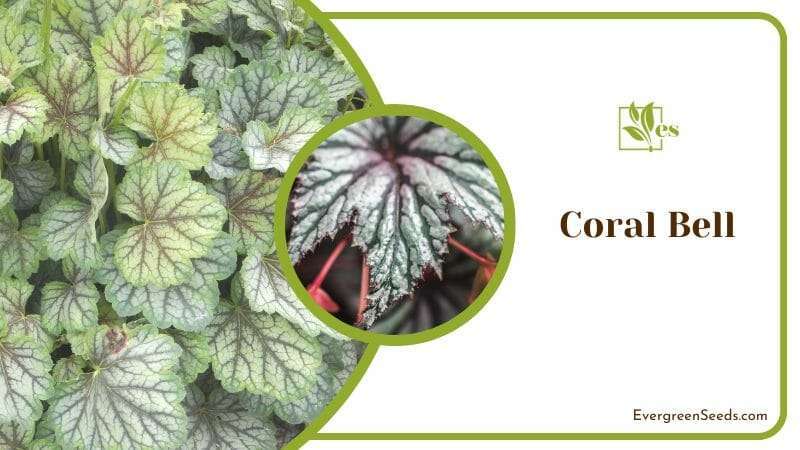
However, you must make sure to water Heuchera well. They are known for being adaptable as evergreen or semi-evergreen perennials, but the first year of growth is critical. After that, they require little maintenance.
Typically, a Coral Bell can grow between 12–36 inches tall and 12–18 inches wide. It is renowned for its excellent foliage and comes in several exquisite colors: deep purple, red, lime green, etc. It also grows small flowers on stalks, which look similar to the ones on hostas.
3. Caladium
With its generously-sized and lavishly colorful leaves, the tropical Caladium (scientific name: Caladium Hortulanum) is an excellent alternative to hostas in the full sun!
However, depending on the climate and the particular variety of Caladium, you might need partial shade for the best growth. If Caladium’s leaves start drooping, make sure that the sunlight and watering are optimal.
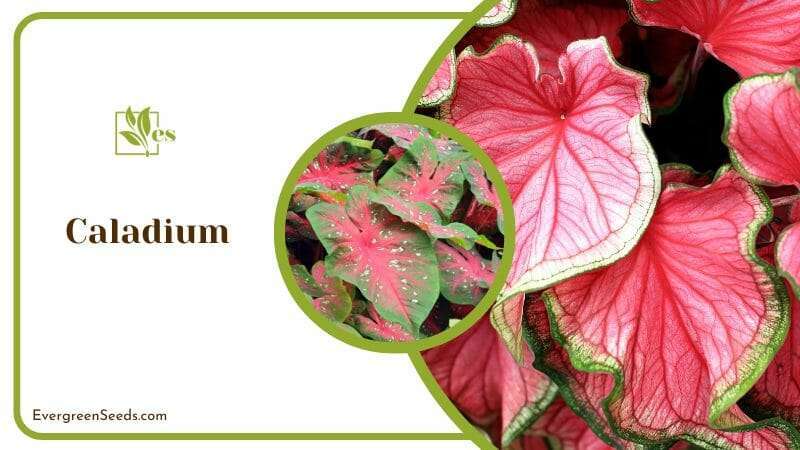
Caladium is non-invasive, and its height and spread are comparable to a hosta at 12–24 inches, which makes it perfect for ground cover. It is also deer-resistant because of its toxicity, but this is a double-edged sword in that it is also poisonous to humans and pets.
On the flip side, however, Caladium is not technically a perennial since it dies in cold climates during the frost. Still, it can survive through the winter with some care in warmer regions, or you can dig them up and store them somewhere over the winter.
Caladium comes in red, pink, and even white varieties, fitting in beautifully with the colors of the garden. Also, Caladium can be easily propagated.
4. Sage
Often called Salvia by enthusiasts, Sage is a perennial with several varieties, and almost all require full sun. It requires little watering and maintenance, which makes it easy to grow.
The plant size varies between 12–36 inches tall and 12–48 inches wide. The smaller varieties and cultivars, such as scarlet sage (Salvia Splendens) and Wendy’s Wish (Salvia x Hybrida), are compact and suitable for groundcover.
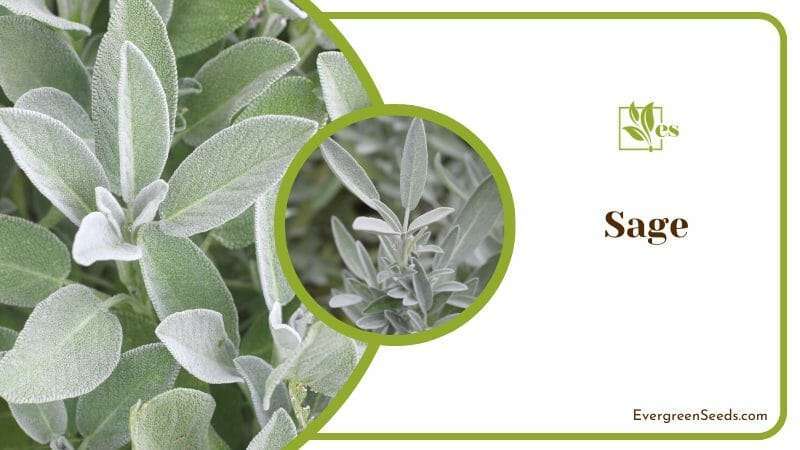
While sage is technically a perennial, it is an annual in certain planting zones, especially in colder climates. Additionally, it does not bear a particular resemblance to hostas as its leaves are smaller in size.
Based on the cultivar, Salvia will bear flowers of bright colors, such as magenta, pink, red, purple, and blue. Flowers appear on individual upright stalks.
5. Sweet Potato Vine
Ornamental Sweet Potato Vines, or Ipomoea batatas, are tender perennials that adore the sun. Do not let the “vine” in the name mislead you – they are a perfectly viable choice for groundcover!
Like a hosta, it is easy to grow but withstands the heat much better. The more sun it gets, the more vibrant its colors.
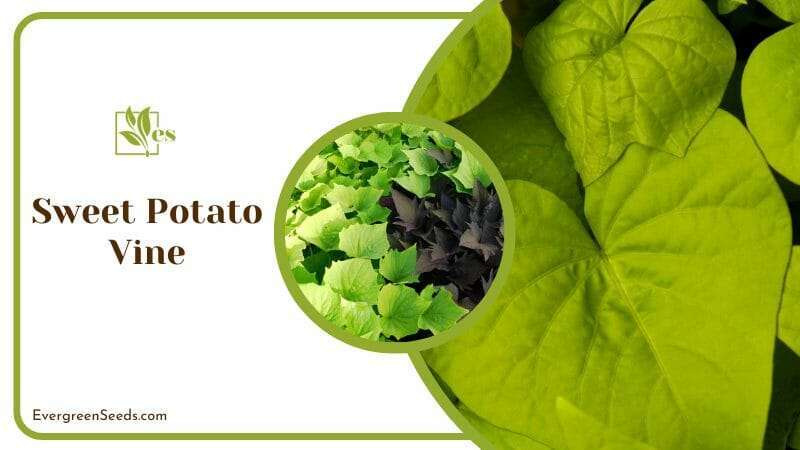
The leaves of the Sweet Potato Vine are heart-shaped like the leaves of many hostas, but they are not as large. Additionally, though the plant’s height is comparable to a hosta at around 16 inches (fully mature), it spreads over 3–6 feet. Only a few large hostas can match this width! Luckily, it is not invasive, although it requires proper spacing.
You can find Sweet Potato Vines in various lush colors such as green, red, burgundy, etc. They rarely flower, but when they do, they introduce a lovely pink or lavender purple into the mix.
6. Dwarf Hibiscus
Sometimes known as rose-mallow, Dwarf Hibiscus is a shorter variant of the Hibiscus plant and prefers full sun for growth. It has large, rounded leaves like hostas, but their blooms are very different: the flowers are up to 4 inches wide. Still, they look astonishingly beautiful!
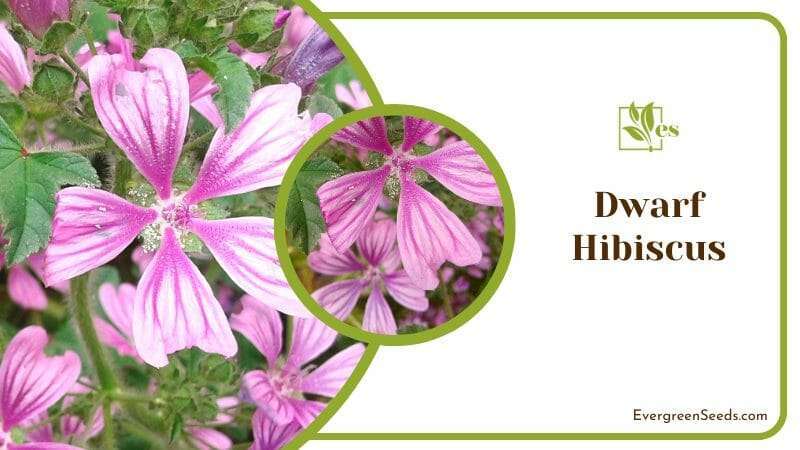
Unlike traditional Hibiscus, Dwarf Hibiscus is generally between 2–3 feet tall with a small spread. Therefore, it is a suitable alternative to hostas for landscaping purposes.
However, Dwarf Hibiscus requires more frequent maintenance than the other options. To ensure its healthy growth, you will need to: water it every other day, fertilize it every few weeks during the bloom season, and ensure it gets as much direct sunlight as possible. Also, you can easily find out if it was attacked by pests since you will see holes in the hibiscus leaves.
7. Dwarf Canna Lily
Dwarf Canna Lily is a tropical perennial that thrives in hot, humid conditions and needs at least 6 hours of daily sunlight. It has large, plantain-like leaves and grows only around 1–3 feet tall with a 6–12 inch spread, which makes it similar to hostas in terms of looks and ideal for landscaping.
On the other hand, Dwarf Cana Lily is not as easy to maintain as the other plants, but it is still low maintenance. It needs consistent soil moisture that requires a regular watering schedule. Additionally, you’ll need to feed it fertilizer every month or so.
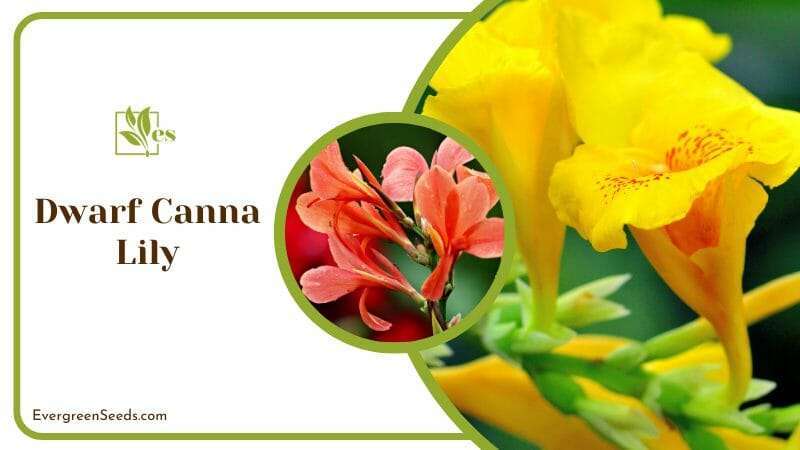
Dwarf Cana Lily blooms early to mid-summer. The flowers come in various hues and shades depending on the plant variety. Mostly, they range from red to orange to pale yellow.
If you live in colder regions, another perennial with showy flowers that you could grow is the Asian Bleeding Heart (Dicentra Spectabilis). In these colder climates, it grows well in the full sun. It has heart-like flowers that add a unique look to any garden.
8. Creeping Jenny
Also known as Moneywort, Creeping Jenny (scientific name: Lysimachia Nummularia) is a resilient, rapid-spreading perennial that grows best in full sun or partial shade. Take care to water it well!
Creeping Jenny works excellently as dense groundcover – a coveted quality of hostas. It grows around 18 inches wide, which is comparable to many hostas. However, it barely goes about 4–6 inches off the ground, and its leaves are much smaller.
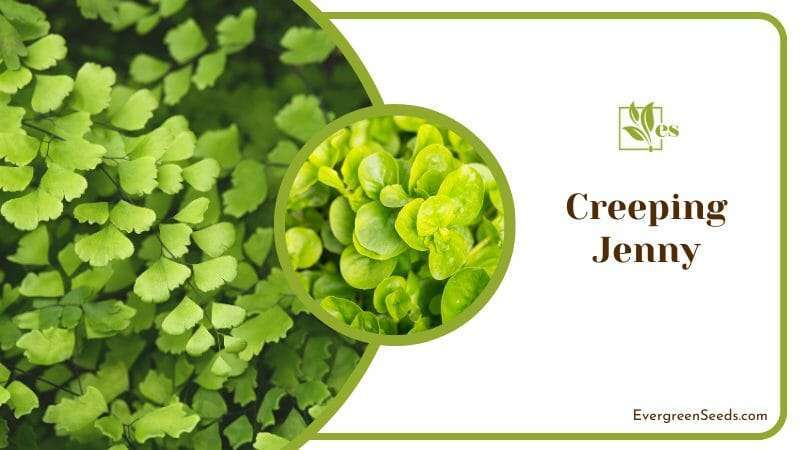
When exposed to plentiful sunlight, the leaves turn a bright yellowish-green color. The golden variety also sprouts golden-yellow flowers, adding a sunny pop to your garden’s aesthetic and a great contrast with other perennials.
A plant that looks similar to Creeping Jenny is the Wild Ginger (Asarum Candanese). However, it burns in full sun and is only suitable for colder climates, where it can withstand longer exposures.
9. Periwinkle
Also called Creeping Myrtle or Vinca (scientific name: Catharanthus Roseus), Periwinkle is a flowering, evergreen perennial that grows well both in partial shade and full sun.
It spreads around 2 feet wide and, like Creeping Jenny, has a shorter height of 3–6 inches. Other species like Vinca Major (Bigleaf Periwinkle) can grow up to 10 inches tall.
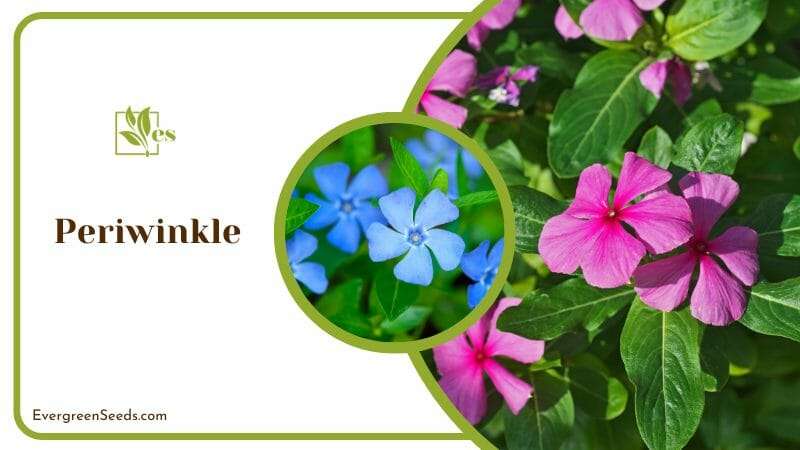
It is an outstanding substitute for hostas if you want ground cover. Additionally, apart from a good water-down every other day during hot summers, it does not need much maintenance once mature.
However, the smaller leaves and height of Periwinkles might be a letdown if you were looking to keep the broader shape of hosta leaves and the upright flowers.
Perennials bloom in spring and sometimes again in the fall. The more sun they get, the more flowers they sprout. The flowers are lavender purple with shades of blue, pink, and white. In some cultivars, you can also get completely different colors!
10. Shooting Star
Shooting Star refers to the many flowering plants under the Primula sect. Dodecatheon – a section of Primulaceae family plants that grow best in partial shade but can tolerate full sun. Some species like Dodecatheon Meadia grow well in either full shade or sun as long as the soil is evenly moist and well-drained.
The plants generally have long, lance-shaped leaves, but Dodecatheon Hendersonii has broader leaves more similar to hostas.
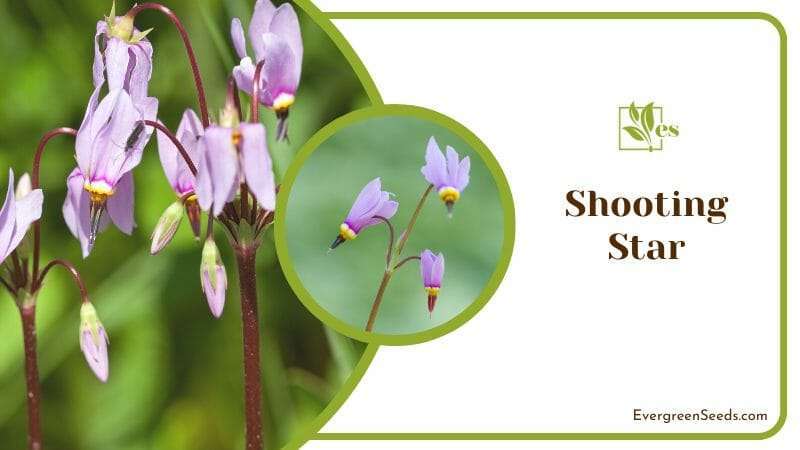
They can grow up to 20 inches tall and 12 inches wide, with nodding flower heads at the end of a long, “shooting” stalk. The flower hues range from dark pink to lavender to white.
Shooting Star is primarily a display plant. However, it will “shoot” through groundcover plants like Periwinkle when planted close to them, which makes for a beautiful spectacle!


